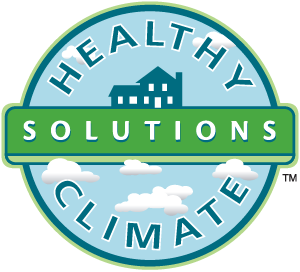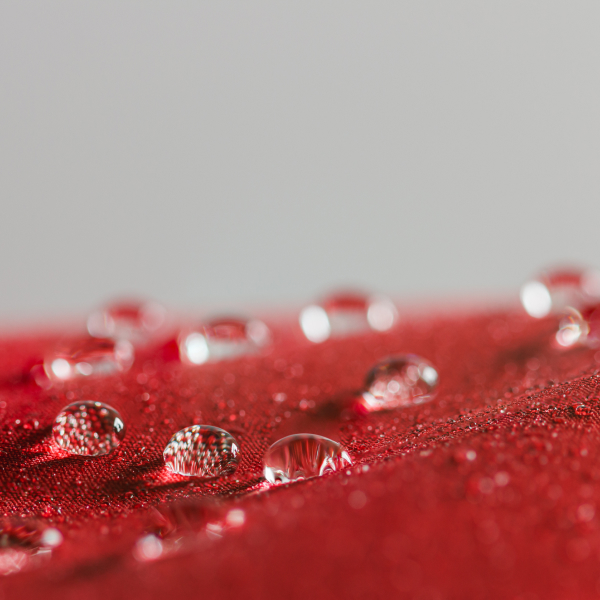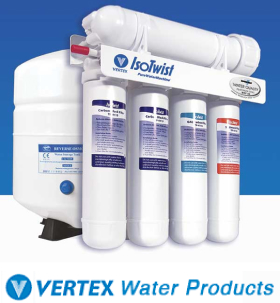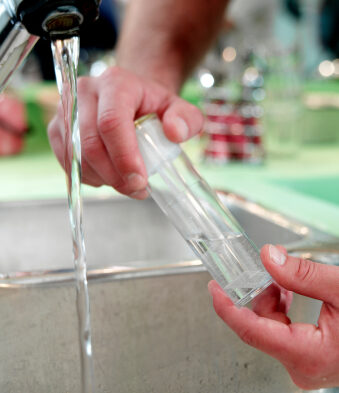What’s Up with PFOAS & PFOS? Here’s Some Important Background
Our team at Save Home Heat Company recently posted about the potential health risks posed by PFAS chemicals in our water supplies, and while this may have struck some of our readers as just another in a growing list of industry acronyms and warnings, this is a topic we feel is worth revisiting. PFAS (pronounced “pee-fass”) is short for a tongue-twisting chemical name that groups together under a single classification many similar and potentially harmful man-made chemicals that, unfortunately, are regularly found in our environment and our daily lives.
In this post, we’ll take a closer look at a couple of the more publicized chemicals found under the PFAS classification, which many of us have heard a lot about in recent years: PFOAs and PFOS.

We’ll also touch base on the recent regulatory history of PFAS chemicals, and ways you can help safeguard you and your family from their potential health impacts.
PFAS Chemicals: An Overview
 PFOAs and PFOS are two of the better known, potentially harmful “forever chemicals” that fall under the umbrella of PFAS. PFAS, which stands for “per- and polyfluoroalkyl substances,” are chemicals that have been widely used for many years, and have been shown to pose a range of potentially significant negative health effects. These chemicals have – and still are, in some cases – been found in various consumer products, our environment, and even our water supplies.
PFOAs and PFOS are two of the better known, potentially harmful “forever chemicals” that fall under the umbrella of PFAS. PFAS, which stands for “per- and polyfluoroalkyl substances,” are chemicals that have been widely used for many years, and have been shown to pose a range of potentially significant negative health effects. These chemicals have – and still are, in some cases – been found in various consumer products, our environment, and even our water supplies.
 While initial research does not indicate a strong presence of PFAS chemicals in our food supply, various products such as certain types of cookware and food storage items, have thrown that overall assessment into question. There are also growing concerns over PFAS chemicals found to be present in agricultural areas, which some experts conclude could find its way into our food supply.
While initial research does not indicate a strong presence of PFAS chemicals in our food supply, various products such as certain types of cookware and food storage items, have thrown that overall assessment into question. There are also growing concerns over PFAS chemicals found to be present in agricultural areas, which some experts conclude could find its way into our food supply.
PFAS, as a whole, have been found in countless household products, including textiles, papers, paints, electronics, construction materials, and more. Research on these chemicals is still in the relatively early stages and much more remains to be discovered. Health officials are uniformly recommending caution as researchers proceed in various directions of study.
What Are PFOAs and PFOS?
Beginning in the 1940s, the closely related PFOS and PFOA chemicals were used to manufacture many industrial and residential products. Both PFOAs and PFOS may still be found in a broad range of products—especially older ones—including carpeting, furniture, cookware, food packaging, personal care products, cosmetics, and clothing, along with firefighting foams used in municipal firefighting, aviation, and military applications. Their use and manufacturing in the U.S. has come under much closer public and governmental scrutiny and regulation in recent years. Unfortunately, many products we use regularly in our country are not manufactured in the U.S. and are not subject to regulation.
PFOAs
PFOA is a highly fluorinated compound with low surface tension, making it effective in products for its nonstick, water-resistant, and stain-resistant properties. It has been used historically in the manufacture of many water-resistant or waterproof recreational clothing and accessories, non-stick cookware, food packaging, wrapping, storage products, and anti-aging cosmetics. In some cases, singling out imported products, it’s still used for many of these purposes.
PFOS
The primary use of PFOS has been as a stain repellant and fabric protector. Not long ago, it was the main ingredient in a number of well-known stain resistance products. PFOS is also an ingredient in many firefighting foams. While PFOS production has been banned in the U.S. for more than 20 years, like PFOAs, we use many imported items that still incorporate PFOS chemicals.
Regulation of PFOAs and PFOS in the U.S.A.
 U.S. manufacturers began phasing PFAS chemicals out of production in the early 2000s. Production of PFOS chemicals in our country ended in 2002, while PFOA production ended much more recently, in 2015. In 2021, the Environmental Protection Agency (EPA) announced the beginning of establishing drinking water standards for PFOAs and PFOS. A number of states had already taken action in this area in preceding years. Since then, the EPA and the International Agency for Research on Cancer (World Health Organization) have designated PFOAs and PFOS as potential human carcinogens, along with many other PFAS chemicals.
U.S. manufacturers began phasing PFAS chemicals out of production in the early 2000s. Production of PFOS chemicals in our country ended in 2002, while PFOA production ended much more recently, in 2015. In 2021, the Environmental Protection Agency (EPA) announced the beginning of establishing drinking water standards for PFOAs and PFOS. A number of states had already taken action in this area in preceding years. Since then, the EPA and the International Agency for Research on Cancer (World Health Organization) have designated PFOAs and PFOS as potential human carcinogens, along with many other PFAS chemicals.
In January of 2023, the EPA proposed a rule that would impose a strict manufacturing review and risk-determination process, affecting the manufacturing or use of approximately 300 PFAS chemicals in a broad range of products. PFOA and PFOS are included in the rule’s scope.Throughout 2023 and into 2024, the EPA has proposed many PFAS environmental and water quality monitoring, reporting, safety standards, prevention, and enforcement initiatives, which are ongoing at this time.
According to many sources, levels of PFAS chemicals in our environment appear to have slowly begun to decrease in recent years, but regardless, their presence in our lives remains pervasive.

How to Safeguard Your Home Against PFOAs and PFOS
While PFOAs and PFOS may seem inescapable in some circumstances, there are several ways you can safeguard yourself and your family by reducing and removing their presence in your home. One of the most effective options is adding a filtration system to your home’s water supply, which is designed to remove PFAS chemicals (keep in mind that many water filters do not provide this capability).
At Save Home Heat, the PFAS water filtration system we currently recommend is the Titanium Series whole-house PFAS water filter, from Brita Pro. If a whole-house water filtration system isn’t the right fit for your circumstances, we also install high quality, point-of-use RO (reverse osmosis) water filters from Vertex Water Products that are also highly effective at removing PFAS chemicals.
Other ways you can help reduce exposure to PFAS chemicals in your home include:
- Reducing your use of plastic products for eating, drinking, and food preparation and storage
- Research the plastic products that you use, especially food storage containers
- Replace nonstick cookware with stainless steel, ceramic, glass, or cast-iron products
- Don’t cook or reheat food wrapped in grease-resistant plastic or paper packaging
- Ditch the microwave popcorn!
- Research the source of the seafood you consume and only purchase from trusted sources
- When purchasing stain-resistant or water-resistant products, again, take the time to research the specific product and the manufacturer
- Do your due diligence in your research – especially products that may come from outside the U.S.
- Beware of fast-food wrappers
- Look for Biodegradable Product Institute-certified products

Always the First Step: Have Your Water Tested!
Since your water supply is one of the clearly identified ways that you may be exposed to PFAS, the best first step is to have your home’s water supply tested. Whether you use municipal water or are on a private well, PFAS can be present – but well water, which is not tested or treated like municipal water supplies, can be particularly suspect. While our team at Save Home Heat does not provide in-house testing for PFAS chemicals, several private labs in our area provide reliable testing. One of the best places to get started learning about PFAS and testing for it is the Colorado Department of Public Health and the Environment (the CDPHE), which in some cases also provides PFAS testing at no charge.
Once you have your test results, our team can help you select a water filtration product that addresses any contaminants you may be concerned about.
Safeguarding Against PFAS in the Denver-Boulder Metro Area
Water safety and how it relates to public health continues to be an increasing area of focus for homeowners in the Boulder-Denver Metro Area. To learn more about PFAS filter options and find a product that can help ensure the quality of your home’s water supply, please reach out to our friendly team at  Save Home Heat Company today to schedule a highly informative, low-pressure, free installation quote for a PFAS water filter or other products that are the right fit for you and your family.
Save Home Heat Company today to schedule a highly informative, low-pressure, free installation quote for a PFAS water filter or other products that are the right fit for you and your family.
Please contact me to provide a water quality product install quote!




